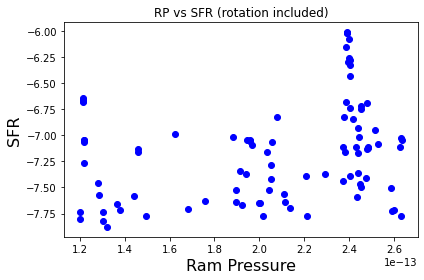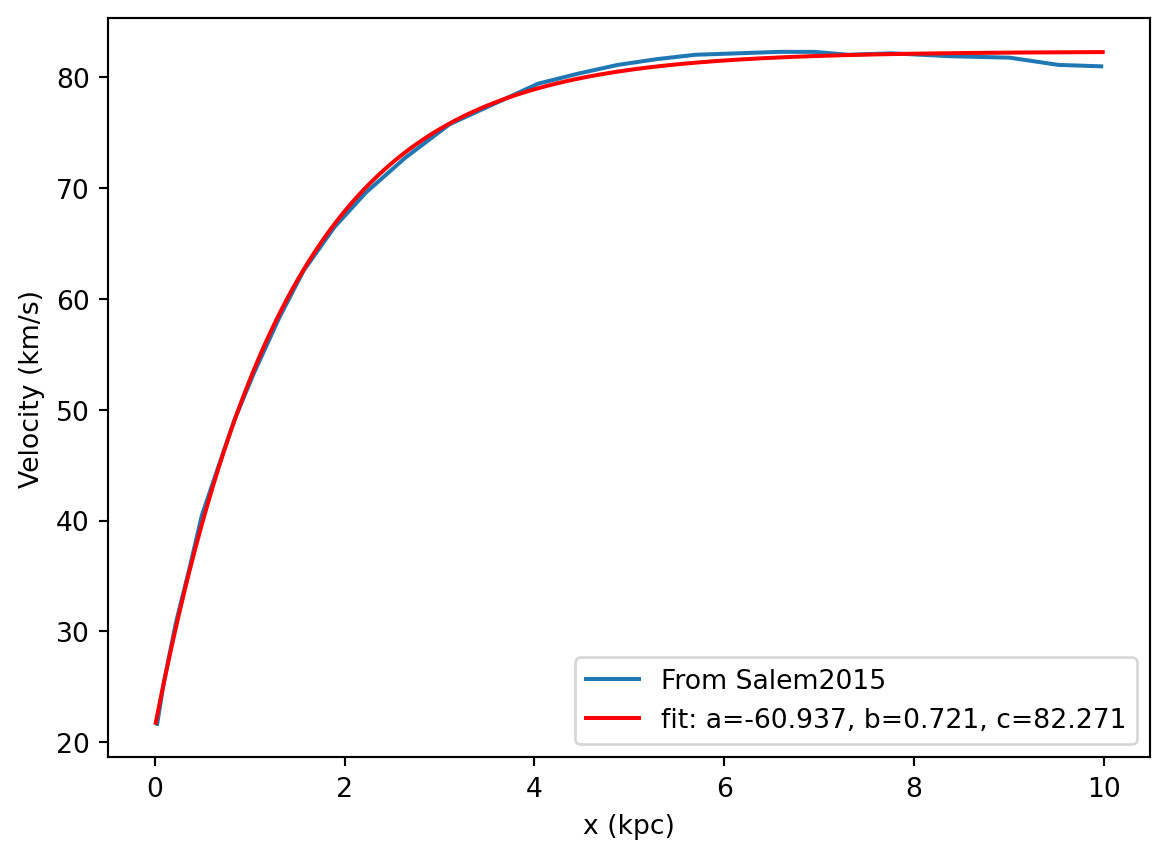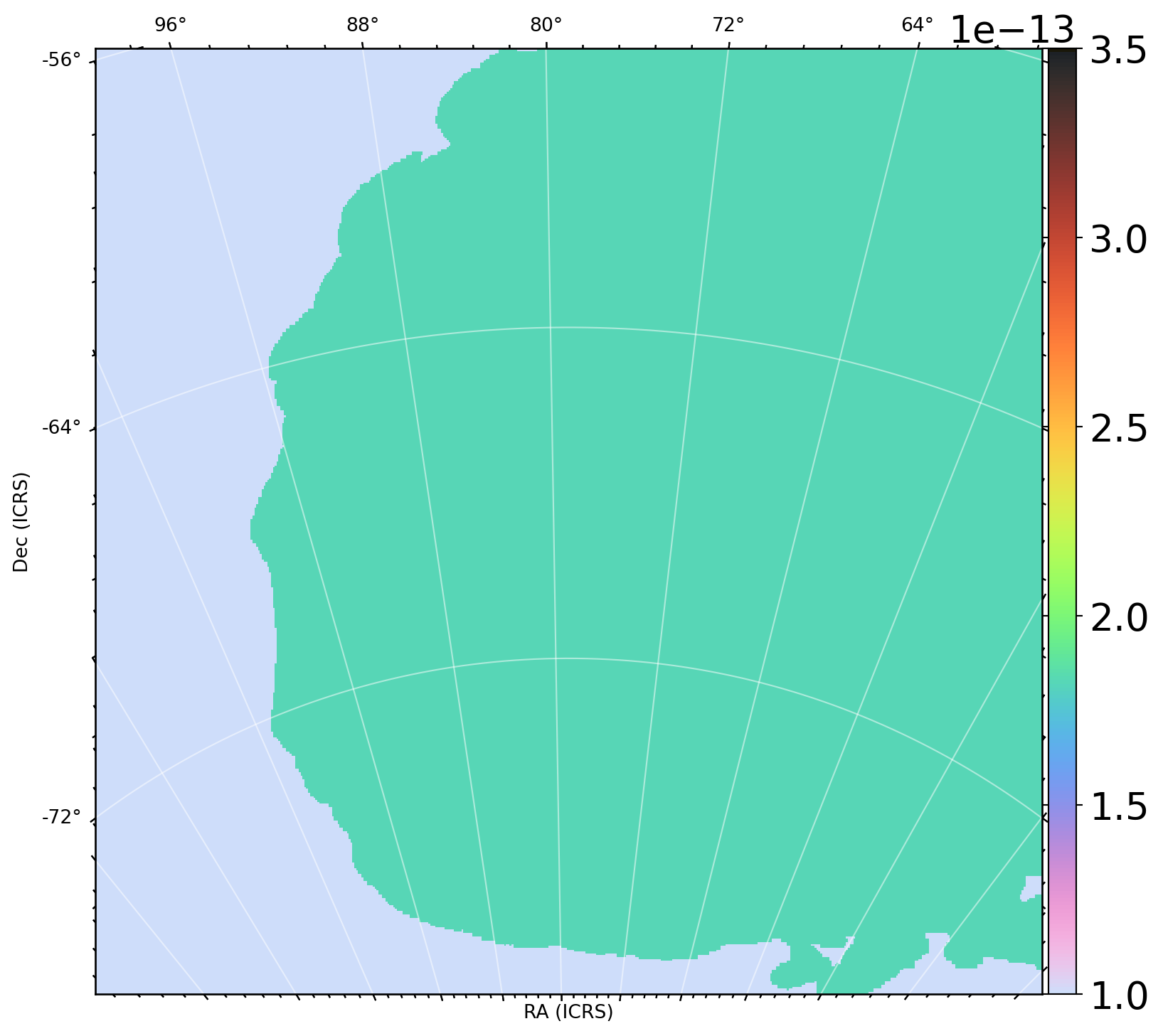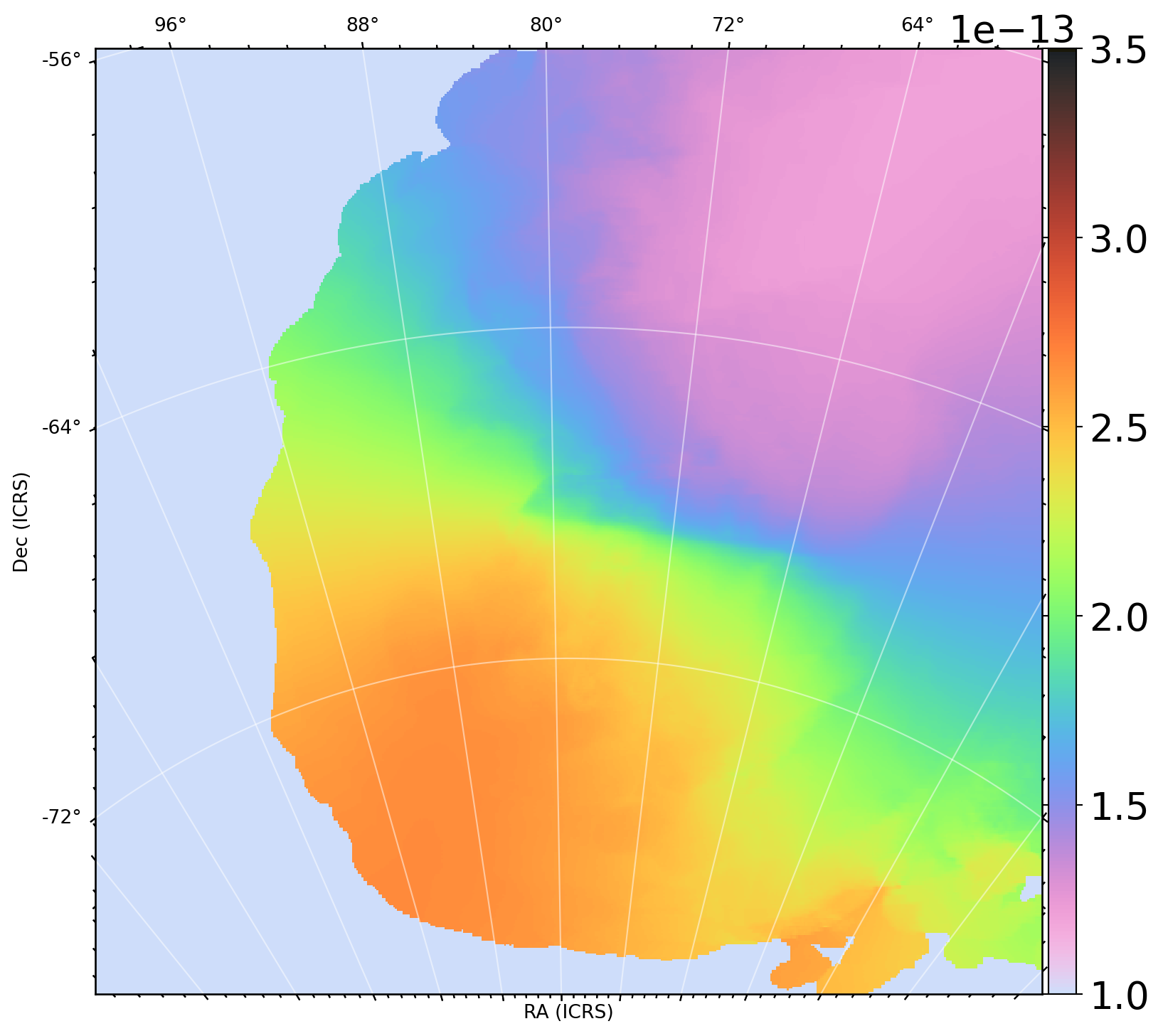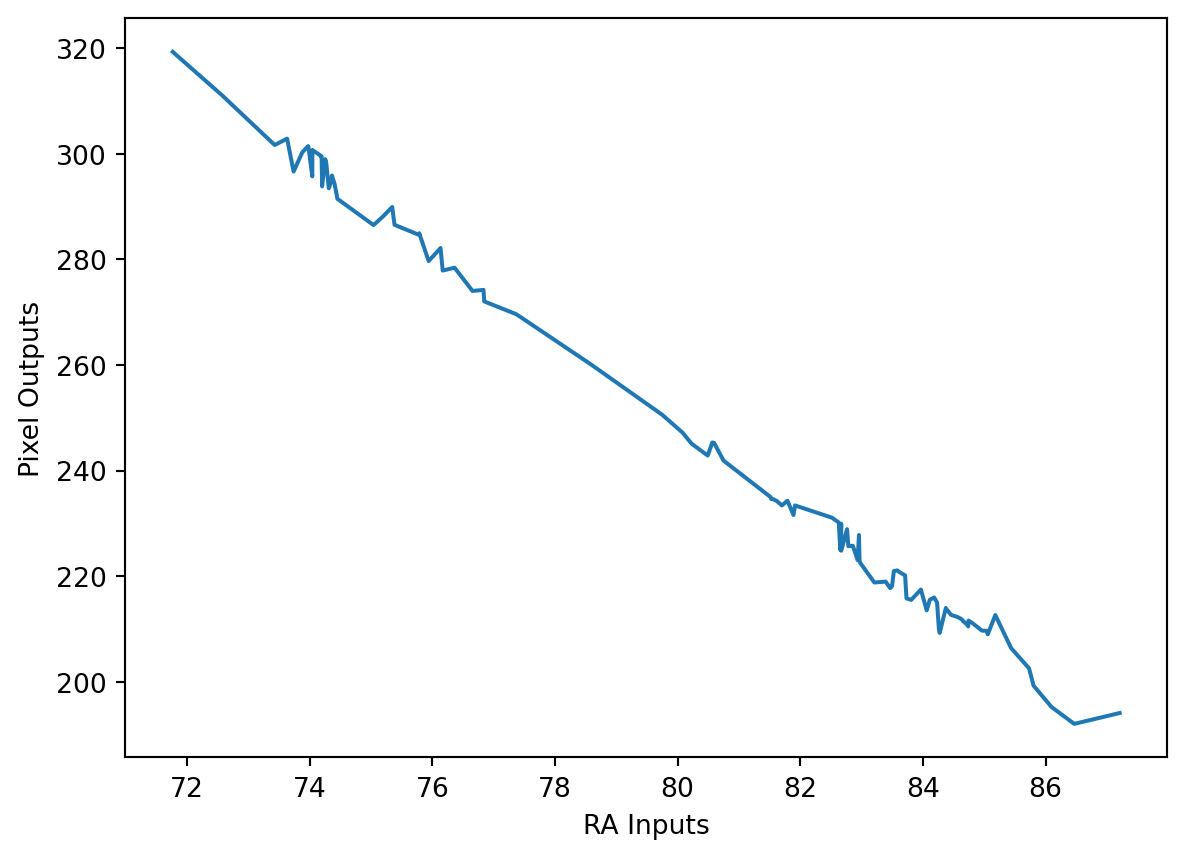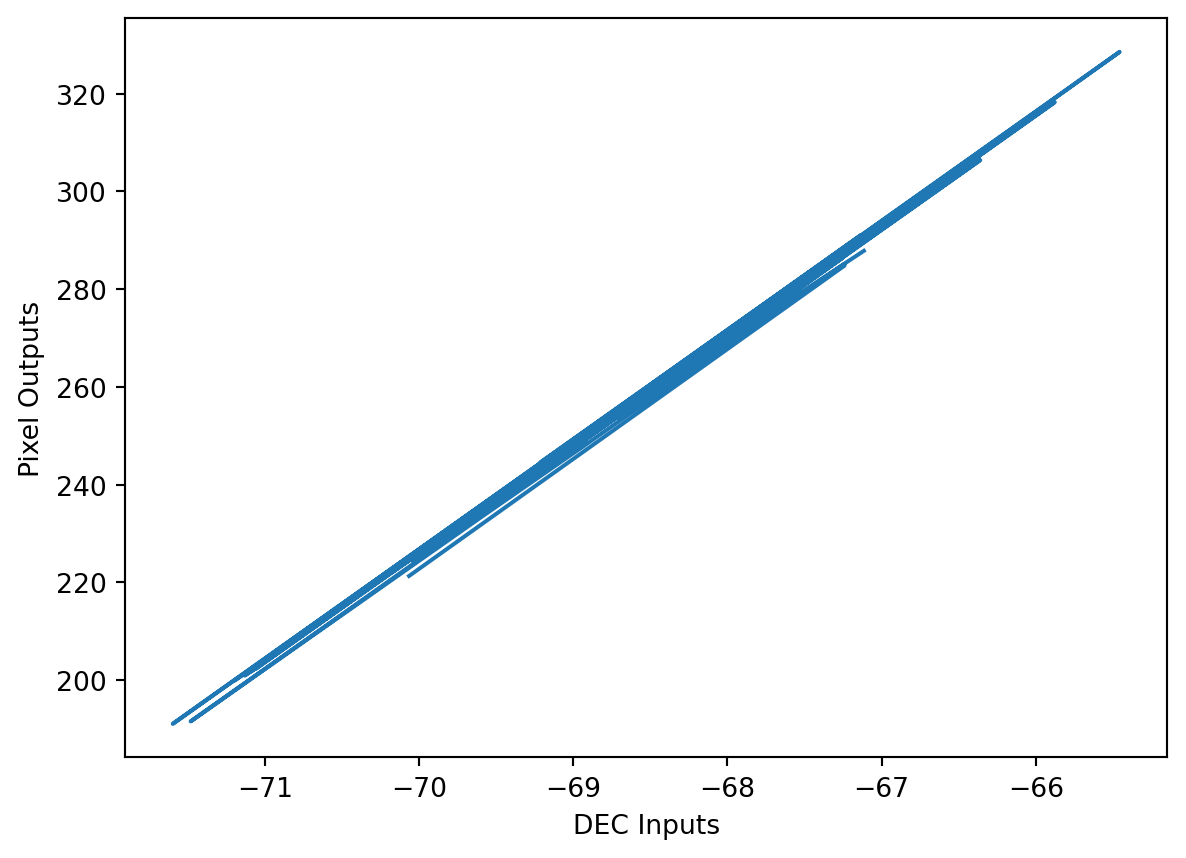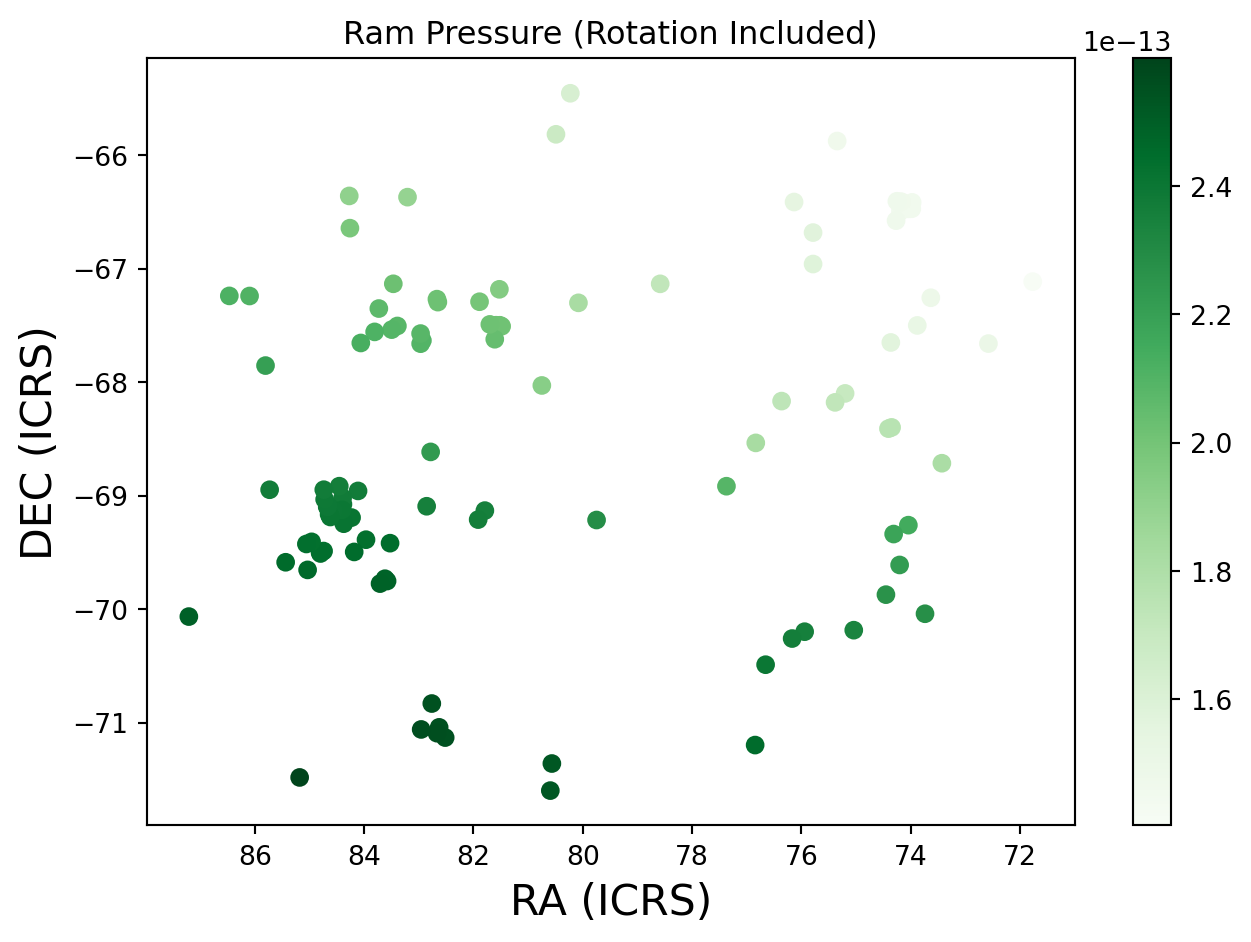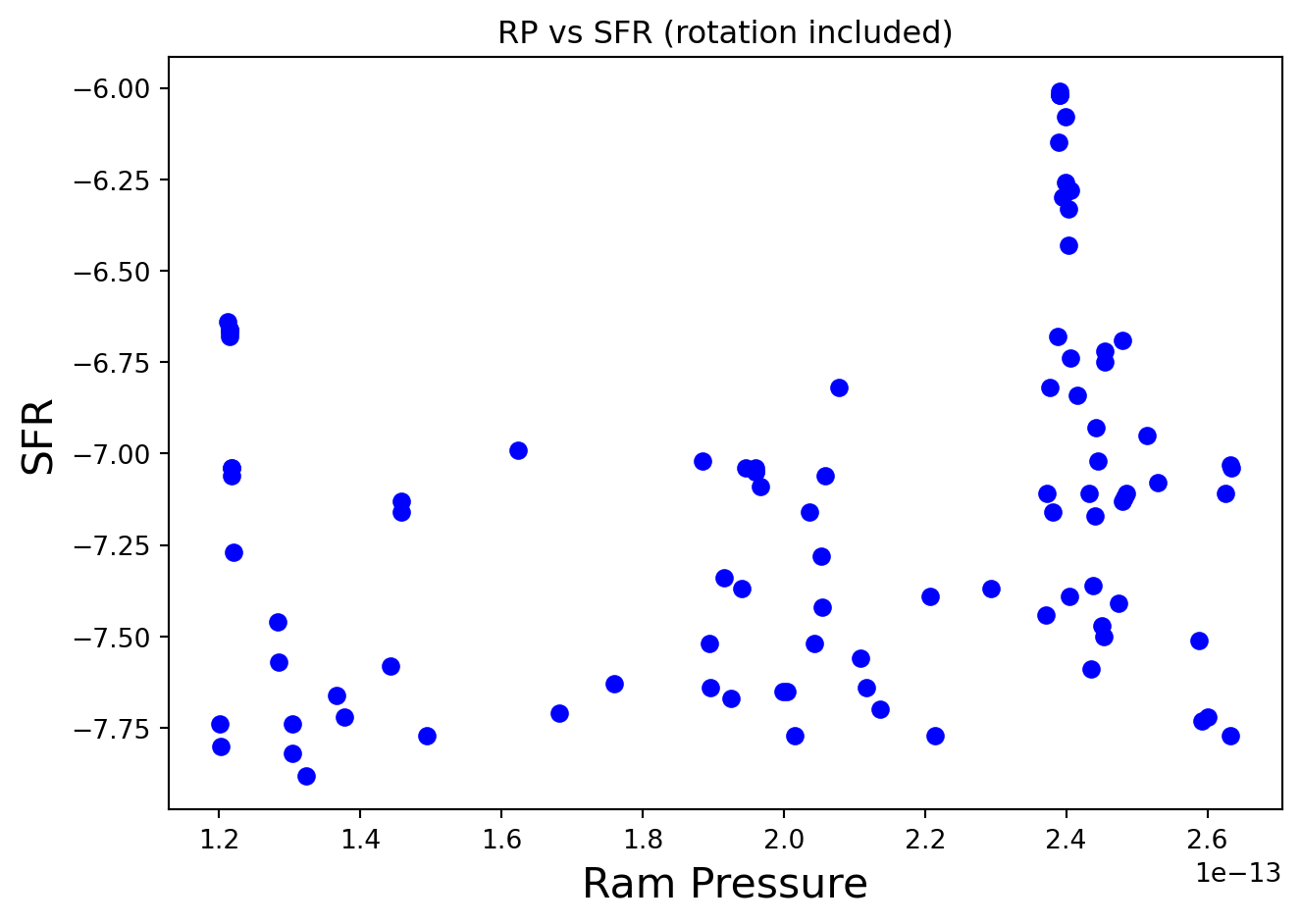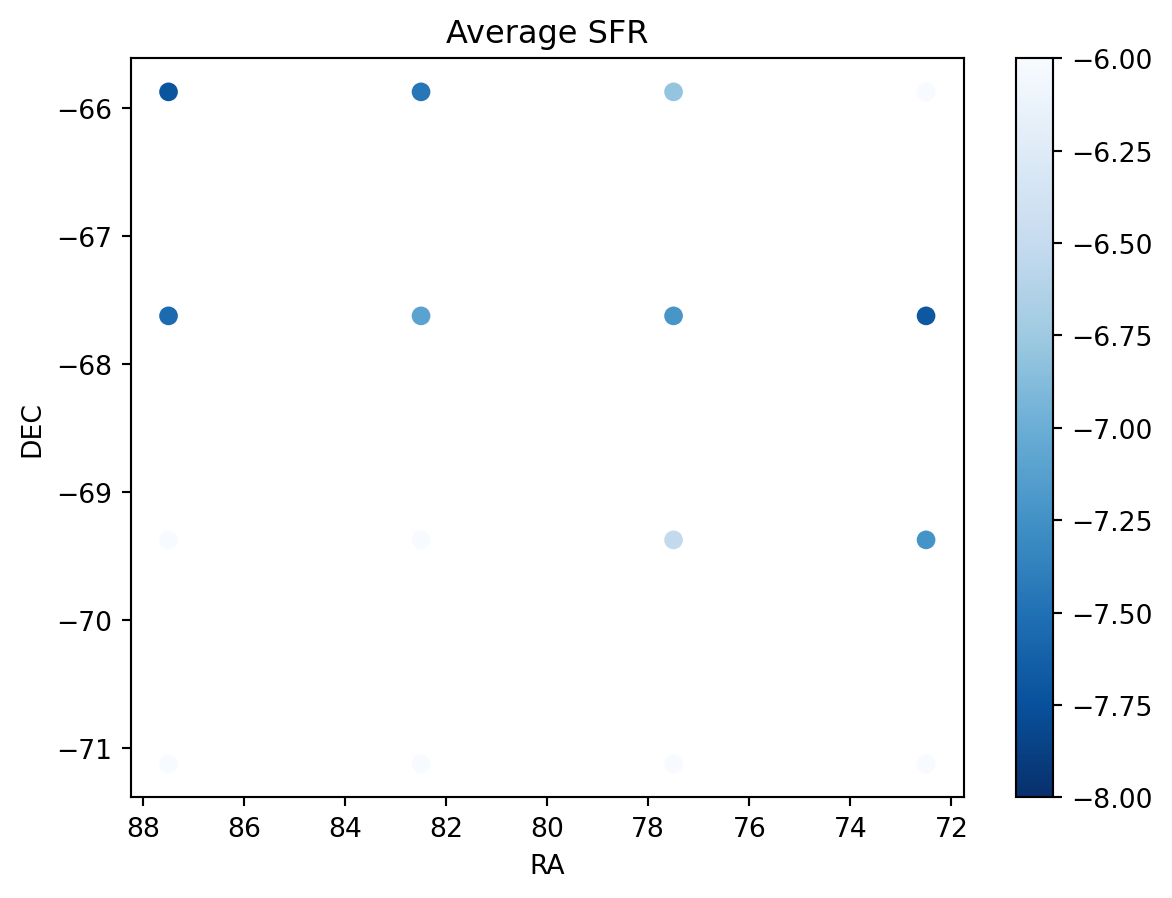Retrieving folder list
Retrieving folder list completed
Building directory structure
Downloading...
From: https://drive.google.com/uc?id=1CD7SLWtpcCW6QZiSvv8AS82auvZAdvZt
To: /Users/chadbustard/Desktop/Quarto_Website/myblog/bustardchad.github.io/posts/LMC_Part2/LMC_high_mass/aligned_LMC_SFR_RP_rotation_ChadVersion.csv
0%| | 0.00/4.21k [00:00<?, ?B/s]100%|██████████| 4.21k/4.21k [00:00<00:00, 4.19MB/s]
Downloading...
From: https://drive.google.com/uc?id=13-BB9KNw6GKtKcJbURRa37SLuzQHwqIk
To: /Users/chadbustard/Desktop/Quarto_Website/myblog/bustardchad.github.io/posts/LMC_Part2/LMC_high_mass/ullyses_lmc_dr5_chadedits.csv
0%| | 0.00/2.09k [00:00<?, ?B/s]100%|██████████| 2.09k/2.09k [00:00<00:00, 6.42MB/s]
Downloading...
From (uriginal): https://drive.google.com/uc?id=1BCvIdYOA3VZj91Fdh9seOki0ww3Rqiky
From (redirected): https://drive.google.com/uc?id=1BCvIdYOA3VZj91Fdh9seOki0ww3Rqiky&confirm=t&uuid=b304b642-ff8e-47d3-8765-05e1b839e731
To: /Users/chadbustard/Desktop/Quarto_Website/myblog/bustardchad.github.io/posts/LMC_Part2/LMC_high_mass/windCRs_hdf5_plt_cnt_0050
0%| | 0.00/668M [00:00<?, ?B/s] 0%| | 2.62M/668M [00:00<00:25, 26.1MB/s] 1%| | 5.24M/668M [00:00<00:29, 22.6MB/s] 1%|▏ | 8.91M/668M [00:00<00:25, 26.0MB/s] 2%|▏ | 13.6M/668M [00:00<00:19, 33.2MB/s] 3%|▎ | 18.4M/668M [00:00<00:17, 37.4MB/s] 3%|▎ | 23.1M/668M [00:00<00:16, 40.0MB/s] 4%|▍ | 27.8M/668M [00:00<00:15, 41.7MB/s] 5%|▍ | 32.5M/668M [00:00<00:14, 42.9MB/s] 6%|▌ | 37.2M/668M [00:00<00:14, 43.5MB/s] 6%|▋ | 41.9M/668M [00:01<00:14, 43.9MB/s] 7%|▋ | 46.7M/668M [00:01<00:14, 44.4MB/s] 8%|▊ | 51.4M/668M [00:01<00:14, 44.0MB/s] 8%|▊ | 56.1M/668M [00:01<00:14, 42.0MB/s] 9%|▉ | 60.8M/668M [00:01<00:14, 42.6MB/s] 10%|▉ | 66.1M/668M [00:01<00:13, 44.5MB/s] 11%|█ | 71.8M/668M [00:01<00:12, 46.8MB/s] 11%|█▏ | 76.5M/668M [00:01<00:13, 43.0MB/s] 12%|█▏ | 82.3M/668M [00:01<00:12, 45.8MB/s] 13%|█▎ | 87.0M/668M [00:02<00:12, 45.0MB/s] 14%|█▎ | 91.8M/668M [00:02<00:12, 45.0MB/s] 14%|█▍ | 96.5M/668M [00:02<00:13, 43.8MB/s] 15%|█▌ | 101M/668M [00:02<00:13, 41.5MB/s] 16%|█▌ | 106M/668M [00:02<00:13, 42.8MB/s] 17%|█▋ | 111M/668M [00:02<00:13, 42.7MB/s] 17%|█▋ | 116M/668M [00:02<00:12, 44.0MB/s] 18%|█▊ | 121M/668M [00:02<00:12, 44.4MB/s] 19%|█▊ | 125M/668M [00:02<00:12, 44.7MB/s] 19%|█▉ | 130M/668M [00:03<00:12, 44.8MB/s] 20%|██ | 135M/668M [00:03<00:13, 40.5MB/s] 21%|██ | 141M/668M [00:03<00:11, 46.4MB/s] 22%|██▏ | 146M/668M [00:03<00:11, 44.9MB/s] 23%|██▎ | 151M/668M [00:03<00:12, 41.9MB/s] 23%|██▎ | 156M/668M [00:03<00:12, 41.4MB/s] 24%|██▍ | 160M/668M [00:03<00:12, 42.0MB/s] 25%|██▍ | 166M/668M [00:03<00:11, 43.5MB/s] 25%|██▌ | 170M/668M [00:04<00:11, 44.2MB/s] 26%|██▌ | 175M/668M [00:04<00:11, 44.5MB/s] 27%|██▋ | 180M/668M [00:04<00:10, 44.7MB/s] 28%|██▊ | 185M/668M [00:04<00:10, 44.8MB/s] 28%|██▊ | 189M/668M [00:04<00:12, 37.1MB/s] 29%|██▉ | 193M/668M [00:04<00:17, 27.9MB/s] 30%|██▉ | 199M/668M [00:04<00:14, 31.7MB/s] 31%|███ | 204M/668M [00:04<00:12, 36.0MB/s] 31%|███ | 208M/668M [00:05<00:15, 29.3MB/s] 32%|███▏ | 212M/668M [00:05<00:14, 31.4MB/s] 32%|███▏ | 217M/668M [00:05<00:12, 34.8MB/s] 33%|███▎ | 222M/668M [00:05<00:11, 37.4MB/s] 34%|███▍ | 226M/668M [00:05<00:11, 39.5MB/s] 35%|███▍ | 231M/668M [00:05<00:10, 41.3MB/s] 35%|███▌ | 236M/668M [00:05<00:10, 42.3MB/s] 36%|███▌ | 241M/668M [00:05<00:09, 42.9MB/s] 37%|███▋ | 245M/668M [00:06<00:09, 43.6MB/s] 37%|███▋ | 250M/668M [00:06<00:09, 44.3MB/s] 38%|███▊ | 255M/668M [00:06<00:09, 44.7MB/s] 39%|███▉ | 260M/668M [00:06<00:09, 42.8MB/s] 40%|███▉ | 265M/668M [00:06<00:08, 45.7MB/s] 40%|████ | 270M/668M [00:06<00:08, 45.3MB/s] 41%|████ | 275M/668M [00:06<00:08, 44.7MB/s] 42%|████▏ | 279M/668M [00:06<00:09, 40.5MB/s] 43%|████▎ | 284M/668M [00:06<00:09, 41.2MB/s] 43%|████▎ | 289M/668M [00:07<00:09, 42.2MB/s] 44%|████▍ | 294M/668M [00:07<00:08, 42.7MB/s] 45%|████▍ | 298M/668M [00:07<00:08, 43.1MB/s] 45%|████▌ | 303M/668M [00:07<00:08, 43.0MB/s] 46%|████▌ | 308M/668M [00:07<00:08, 43.7MB/s] 47%|████▋ | 312M/668M [00:07<00:08, 44.1MB/s] 47%|████▋ | 317M/668M [00:07<00:07, 44.5MB/s] 48%|████▊ | 322M/668M [00:07<00:07, 44.8MB/s] 49%|████▉ | 327M/668M [00:07<00:07, 45.1MB/s] 50%|████▉ | 331M/668M [00:07<00:07, 45.1MB/s] 50%|█████ | 336M/668M [00:08<00:07, 44.7MB/s] 51%|█████ | 341M/668M [00:08<00:07, 45.4MB/s] 52%|█████▏ | 346M/668M [00:08<00:07, 45.5MB/s] 52%|█████▏ | 350M/668M [00:08<00:06, 45.5MB/s] 53%|█████▎ | 355M/668M [00:08<00:06, 45.4MB/s] 54%|█████▍ | 360M/668M [00:08<00:06, 45.3MB/s] 55%|█████▍ | 364M/668M [00:08<00:06, 43.6MB/s] 55%|█████▌ | 369M/668M [00:08<00:06, 43.6MB/s] 56%|█████▌ | 374M/668M [00:08<00:06, 44.6MB/s] 57%|█████▋ | 379M/668M [00:09<00:06, 44.8MB/s] 57%|█████▋ | 384M/668M [00:09<00:06, 44.8MB/s] 58%|█████▊ | 388M/668M [00:09<00:06, 44.5MB/s] 59%|█████▉ | 393M/668M [00:09<00:06, 44.6MB/s] 60%|█████▉ | 398M/668M [00:09<00:06, 44.5MB/s] 60%|██████ | 403M/668M [00:09<00:05, 45.1MB/s] 61%|██████ | 407M/668M [00:09<00:05, 45.1MB/s] 62%|██████▏ | 412M/668M [00:09<00:05, 45.2MB/s] 62%|██████▏ | 417M/668M [00:09<00:05, 43.7MB/s] 63%|██████▎ | 422M/668M [00:10<00:05, 44.0MB/s] 64%|██████▍ | 426M/668M [00:10<00:06, 34.9MB/s] 64%|██████▍ | 430M/668M [00:10<00:08, 29.7MB/s] 65%|██████▌ | 435M/668M [00:10<00:07, 31.7MB/s] 66%|██████▌ | 439M/668M [00:10<00:06, 35.0MB/s] 66%|██████▋ | 444M/668M [00:10<00:06, 36.3MB/s] 67%|██████▋ | 449M/668M [00:10<00:05, 39.4MB/s] 68%|██████▊ | 454M/668M [00:10<00:05, 40.3MB/s] 69%|██████▊ | 459M/668M [00:11<00:04, 42.6MB/s] 69%|██████▉ | 463M/668M [00:11<00:04, 43.2MB/s] 70%|███████ | 468M/668M [00:11<00:04, 43.8MB/s] 71%|███████ | 473M/668M [00:11<00:04, 44.1MB/s] 71%|███████▏ | 478M/668M [00:11<00:04, 44.6MB/s] 72%|███████▏ | 482M/668M [00:11<00:04, 45.0MB/s] 73%|███████▎ | 487M/668M [00:11<00:04, 44.2MB/s] 74%|███████▎ | 492M/668M [00:11<00:03, 45.4MB/s] 74%|███████▍ | 497M/668M [00:11<00:03, 45.4MB/s] 75%|███████▌ | 502M/668M [00:12<00:03, 45.3MB/s] 76%|███████▌ | 506M/668M [00:12<00:03, 43.3MB/s] 76%|███████▋ | 511M/668M [00:12<00:03, 44.1MB/s] 77%|███████▋ | 516M/668M [00:12<00:03, 44.4MB/s] 78%|███████▊ | 521M/668M [00:12<00:03, 40.7MB/s] 79%|███████▊ | 525M/668M [00:12<00:03, 41.9MB/s] 79%|███████▉ | 530M/668M [00:12<00:03, 42.8MB/s] 80%|████████ | 535M/668M [00:12<00:03, 43.7MB/s] 81%|████████ | 539M/668M [00:12<00:02, 44.2MB/s] 81%|████████▏ | 544M/668M [00:12<00:02, 44.5MB/s] 82%|████████▏ | 549M/668M [00:13<00:02, 44.9MB/s] 83%|████████▎ | 554M/668M [00:13<00:02, 44.9MB/s] 84%|████████▎ | 558M/668M [00:13<00:02, 43.8MB/s] 84%|████████▍ | 563M/668M [00:13<00:02, 44.2MB/s] 85%|████████▍ | 568M/668M [00:13<00:02, 44.5MB/s] 86%|████████▌ | 573M/668M [00:13<00:02, 44.7MB/s] 86%|████████▋ | 577M/668M [00:13<00:02, 44.6MB/s] 87%|████████▋ | 582M/668M [00:13<00:01, 45.0MB/s] 88%|████████▊ | 587M/668M [00:13<00:01, 45.1MB/s] 88%|████████▊ | 591M/668M [00:14<00:01, 43.8MB/s] 89%|████████▉ | 596M/668M [00:14<00:01, 43.8MB/s] 90%|████████▉ | 601M/668M [00:14<00:01, 45.3MB/s] 91%|█████████ | 606M/668M [00:14<00:01, 40.8MB/s] 91%|█████████▏| 611M/668M [00:14<00:01, 42.3MB/s] 92%|█████████▏| 616M/668M [00:14<00:01, 43.2MB/s] 93%|█████████▎| 620M/668M [00:14<00:01, 43.8MB/s] 93%|█████████▎| 625M/668M [00:14<00:01, 42.6MB/s] 94%|█████████▍| 630M/668M [00:14<00:00, 42.8MB/s] 95%|█████████▍| 635M/668M [00:15<00:00, 44.3MB/s] 96%|█████████▌| 640M/668M [00:15<00:00, 44.6MB/s] 96%|█████████▋| 644M/668M [00:15<00:00, 44.9MB/s] 97%|█████████▋| 649M/668M [00:15<00:00, 44.9MB/s] 98%|█████████▊| 654M/668M [00:15<00:00, 40.5MB/s] 98%|█████████▊| 658M/668M [00:15<00:00, 33.6MB/s] 99%|█████████▉| 663M/668M [00:15<00:00, 36.5MB/s]100%|█████████▉| 667M/668M [00:15<00:00, 38.8MB/s]100%|██████████| 668M/668M [00:15<00:00, 41.9MB/s]
Download completed
